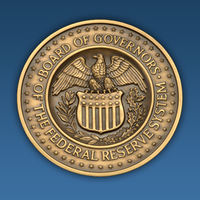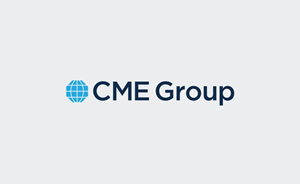The Fed's Tightrope Walk: Balancing Inflation and Political Pressure
June 25, 2025, 5:47 pm
The Federal Reserve is in a precarious position. With inflation hovering above the target and political pressure mounting, Fed Chair Jerome Powell faces a challenging landscape. The central bank's mission is clear: maintain price stability and support employment. Yet, the path forward is fraught with uncertainty.
As Powell prepares to testify before Congress, the stakes are high. His words will be scrutinized, not just for their economic implications but also for their political ramifications. The backdrop is charged. President Trump and his allies are pushing for aggressive rate cuts, while Powell emphasizes caution. The tension is palpable.
Inflation is a beast that must be tamed. Powell acknowledges that it remains above the Fed's 2% target. The recent data suggests a potential rise to 2.3% in May, with core inflation edging up to 2.6%. These figures are troubling. They signal that the Fed's efforts to control inflation are not yet complete. Powell's commitment to keeping inflation in check is unwavering. He understands that a one-time price spike can morph into a chronic problem if not managed carefully.
The economic landscape is complex. The labor market is strong, and growth appears solid. Yet, the impact of tariffs looms large. Powell's cautious approach reflects a desire to gather more data before making any policy adjustments. He insists that the Fed is "well positioned to wait" and will not rush into decisions without a clearer understanding of the economic environment.
This stance, however, has not gone unnoticed. Trump has ramped up his criticism of Powell, labeling him as "dumb" and "hardheaded." The president's attacks are personal and pointed. They create a challenging atmosphere for Powell, who must navigate the political minefield while adhering to the Fed's mandate. The central bank's independence is at stake.
The dynamics within the Federal Open Market Committee (FOMC) add another layer of complexity. Recent comments from Fed Governors Michelle Bowman and Christopher Waller suggest a shift in sentiment. Both have indicated a willingness to consider rate cuts as early as July, provided inflation data remains favorable. This internal dissent could complicate Powell's message. He must unify the committee while facing external pressures.
Wall Street is buzzing with speculation. Traders are adjusting their expectations, with a 23% probability of a July cut and a more definitive 82% chance of a September move. The market's pulse is quickening, reflecting the uncertainty that permeates the financial landscape. Powell's testimony will be pivotal. He must strike a balance between reassuring investors and maintaining the Fed's credibility.
The political landscape is equally fraught. Congressional hearings can be contentious. Powell will likely face tough questions from both sides of the aisle. Republicans may press him on the need for easier monetary policy, while Democrats could demand more aggressive action. The potential for a hostile environment looms large.
Critics argue that the Fed's independence is eroding. The White House's demands for immediate action could undermine the central bank's credibility. The Fed's mission is to stabilize inflation and support employment, not to cater to political whims. Powell must tread carefully. The risk of losing the Fed's reputation is real.
Some economists caution against drastic cuts. The notion that the Fed can simply lower rates and expect immediate results is a myth. Economic dynamics are complex. Powell's challenge is to navigate these intricacies while adhering to the Fed's dual mandate. The stakes are high, and the consequences of missteps could be severe.
The Fed's credibility hinges on its ability to maintain price stability. Powell's commitment to this goal is unwavering. He understands that without price stability, the labor market cannot thrive. The Fed's obligation is to keep longer-term inflation expectations anchored. This is a delicate balancing act.
As Powell prepares for his testimony, the pressure mounts. He must articulate a clear vision for the Fed's path forward. The economic landscape is shifting, and the stakes are high. The Fed's decisions will reverberate through the economy, impacting millions of Americans. Powell's words will carry weight.
In conclusion, the Federal Reserve is at a crossroads. Powell's cautious approach reflects a desire to gather more data before making significant policy changes. The political pressure is intense, and the economic landscape is fraught with uncertainty. The Fed's mission remains clear: stabilize inflation and support employment. Yet, the path forward is anything but straightforward. Powell must navigate this complex terrain with skill and precision. The future of the economy hangs in the balance.
As Powell prepares to testify before Congress, the stakes are high. His words will be scrutinized, not just for their economic implications but also for their political ramifications. The backdrop is charged. President Trump and his allies are pushing for aggressive rate cuts, while Powell emphasizes caution. The tension is palpable.
Inflation is a beast that must be tamed. Powell acknowledges that it remains above the Fed's 2% target. The recent data suggests a potential rise to 2.3% in May, with core inflation edging up to 2.6%. These figures are troubling. They signal that the Fed's efforts to control inflation are not yet complete. Powell's commitment to keeping inflation in check is unwavering. He understands that a one-time price spike can morph into a chronic problem if not managed carefully.
The economic landscape is complex. The labor market is strong, and growth appears solid. Yet, the impact of tariffs looms large. Powell's cautious approach reflects a desire to gather more data before making any policy adjustments. He insists that the Fed is "well positioned to wait" and will not rush into decisions without a clearer understanding of the economic environment.
This stance, however, has not gone unnoticed. Trump has ramped up his criticism of Powell, labeling him as "dumb" and "hardheaded." The president's attacks are personal and pointed. They create a challenging atmosphere for Powell, who must navigate the political minefield while adhering to the Fed's mandate. The central bank's independence is at stake.
The dynamics within the Federal Open Market Committee (FOMC) add another layer of complexity. Recent comments from Fed Governors Michelle Bowman and Christopher Waller suggest a shift in sentiment. Both have indicated a willingness to consider rate cuts as early as July, provided inflation data remains favorable. This internal dissent could complicate Powell's message. He must unify the committee while facing external pressures.
Wall Street is buzzing with speculation. Traders are adjusting their expectations, with a 23% probability of a July cut and a more definitive 82% chance of a September move. The market's pulse is quickening, reflecting the uncertainty that permeates the financial landscape. Powell's testimony will be pivotal. He must strike a balance between reassuring investors and maintaining the Fed's credibility.
The political landscape is equally fraught. Congressional hearings can be contentious. Powell will likely face tough questions from both sides of the aisle. Republicans may press him on the need for easier monetary policy, while Democrats could demand more aggressive action. The potential for a hostile environment looms large.
Critics argue that the Fed's independence is eroding. The White House's demands for immediate action could undermine the central bank's credibility. The Fed's mission is to stabilize inflation and support employment, not to cater to political whims. Powell must tread carefully. The risk of losing the Fed's reputation is real.
Some economists caution against drastic cuts. The notion that the Fed can simply lower rates and expect immediate results is a myth. Economic dynamics are complex. Powell's challenge is to navigate these intricacies while adhering to the Fed's dual mandate. The stakes are high, and the consequences of missteps could be severe.
The Fed's credibility hinges on its ability to maintain price stability. Powell's commitment to this goal is unwavering. He understands that without price stability, the labor market cannot thrive. The Fed's obligation is to keep longer-term inflation expectations anchored. This is a delicate balancing act.
As Powell prepares for his testimony, the pressure mounts. He must articulate a clear vision for the Fed's path forward. The economic landscape is shifting, and the stakes are high. The Fed's decisions will reverberate through the economy, impacting millions of Americans. Powell's words will carry weight.
In conclusion, the Federal Reserve is at a crossroads. Powell's cautious approach reflects a desire to gather more data before making significant policy changes. The political pressure is intense, and the economic landscape is fraught with uncertainty. The Fed's mission remains clear: stabilize inflation and support employment. Yet, the path forward is anything but straightforward. Powell must navigate this complex terrain with skill and precision. The future of the economy hangs in the balance.


